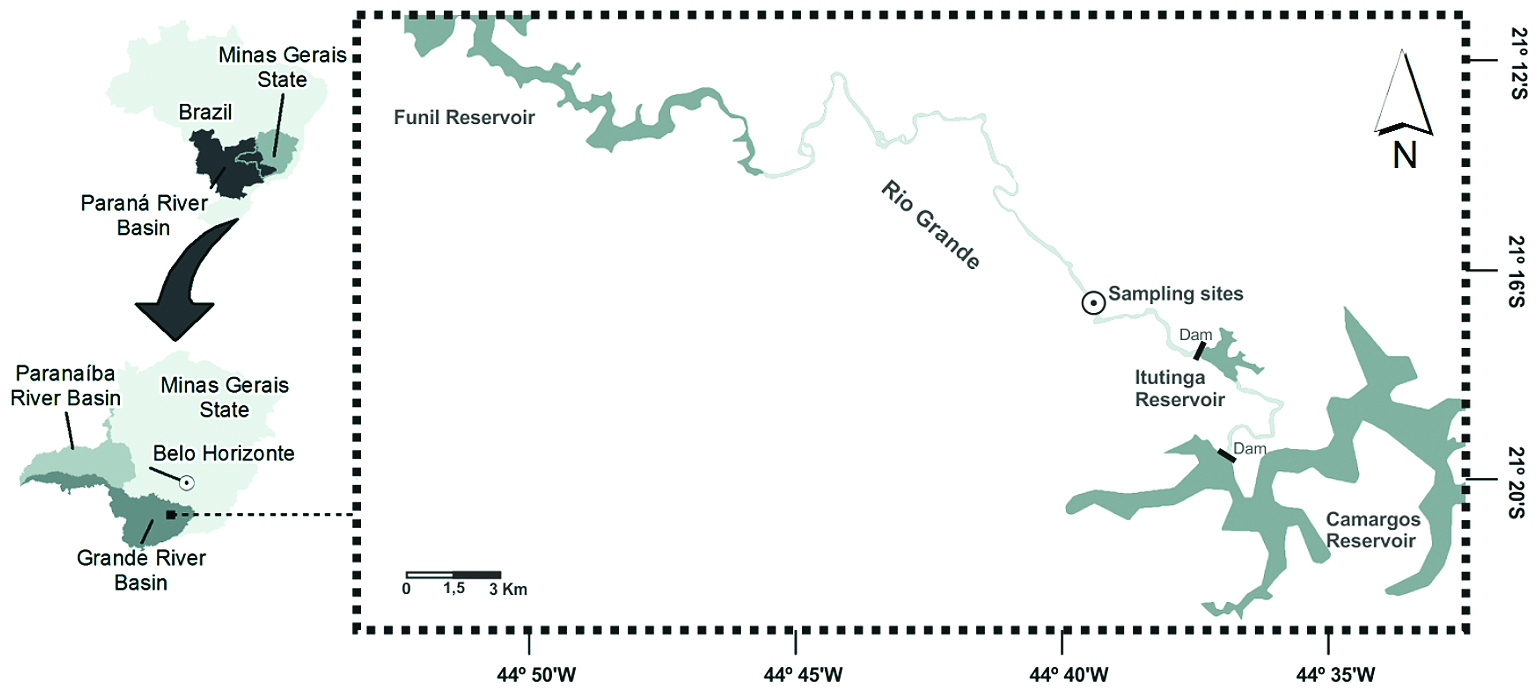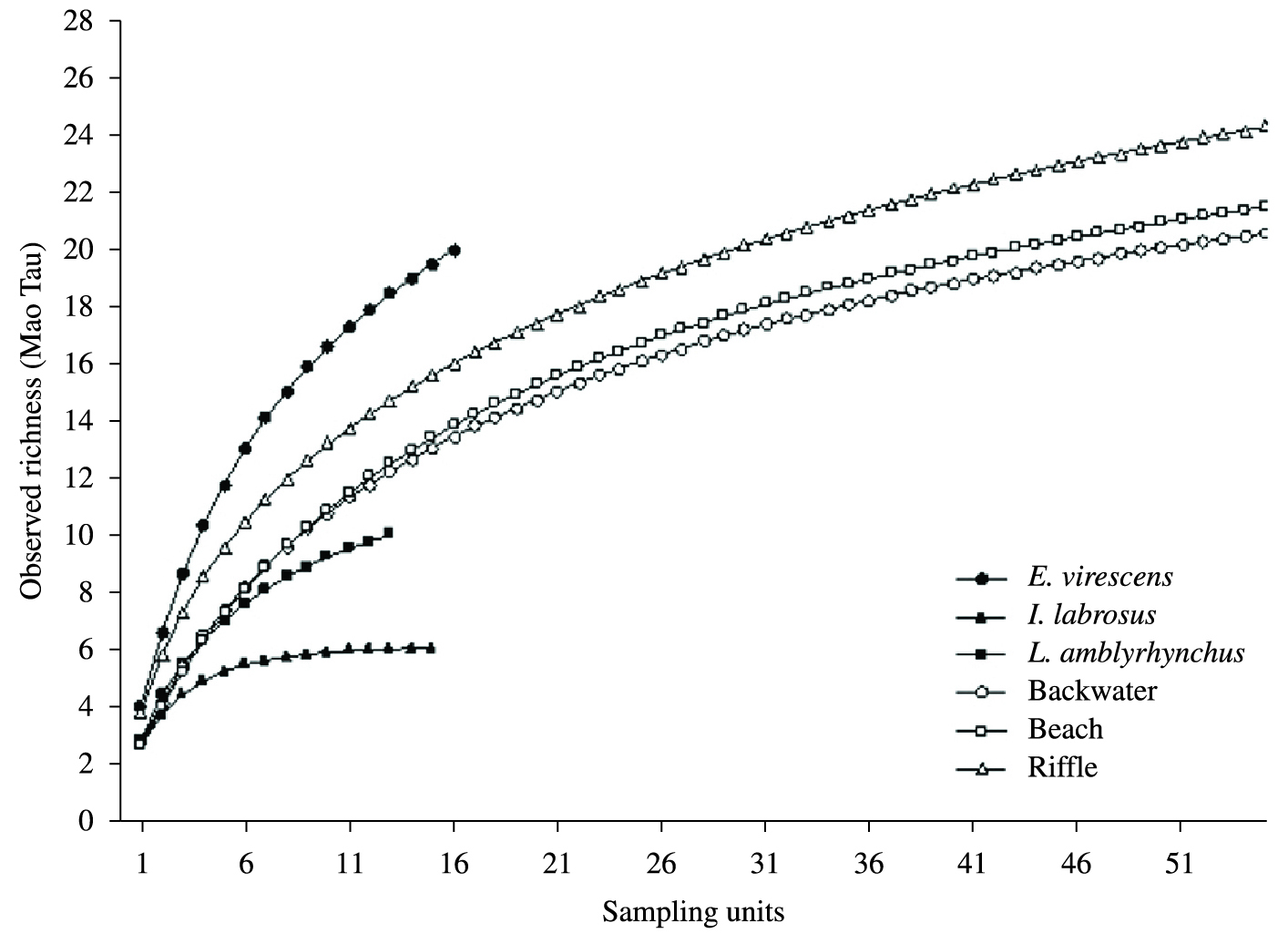The choice of sampling gears to assess benthic macroinvertebrate communities depends on environmental characteristics, study objectives, and cost effectiveness. Because of the high foraging capacity and diverse habitats and behaviors of benthophagous fishes, their stomach contents may offer a useful sampling tool in studies of benthic macroinvertebrates, especially in large, deep, fast rivers that are difficult to sample with traditional sediment sampling gear. Our objective was to compare the benthic macroinvertebrate communities sampled from sediments with those sampled from fish stomachs. We collected benthic macroinvertebrates and fish from three different habitat types (backwater, beach, riffle) in the wet season, drying season, and dry season along a single reach of the Grande River (Paraná River Basin, southeast Brazil). We sampled sediments through use of a Petersen dredge (total of 216 grabs) and used gill nets to sample fish (total of 36 samples). We analyzed the stomach contents of three commonly occurring benthophagous fish species (Eigenmannia virescens, Iheringichthys labrosus, Leporinus amblyrhynchus). Chironomids dominated in both sampling methods. Macroinvertebrate taxonomic composition and abundances from fish stomachs differed from those from sediment samples, but less so from riffles than from backwater and beach habitats. Macroinvertebrate taxa from E. virescens stomachs were more strongly correlated with sediment samples from all three habitats than were those from the other two species. The species accumulation curves and higher mean dispersion values, compared with with sediment samples suggest that E. virescens is more efficient than sediment samples and the other fish studied at collecting benthic taxa. We conclude that by analyzing the stomach contents of benthophagous fishes it is possible to assess important characteristics of benthic communities (dispersion, taxonomic composition and diversity). This is especially true for studies that only sample fish assemblages to evaluate aquatic ecosystem impacts. Therefore, this approach can be useful to amplify assessments of human impacts, and to incorporate additional bioindicators.
large rivers sampling; fish stomach contents; trophic interactions; habitats; bioindicators

 Thumbnail
Thumbnail
 Thumbnail
Thumbnail
 Thumbnail
Thumbnail


